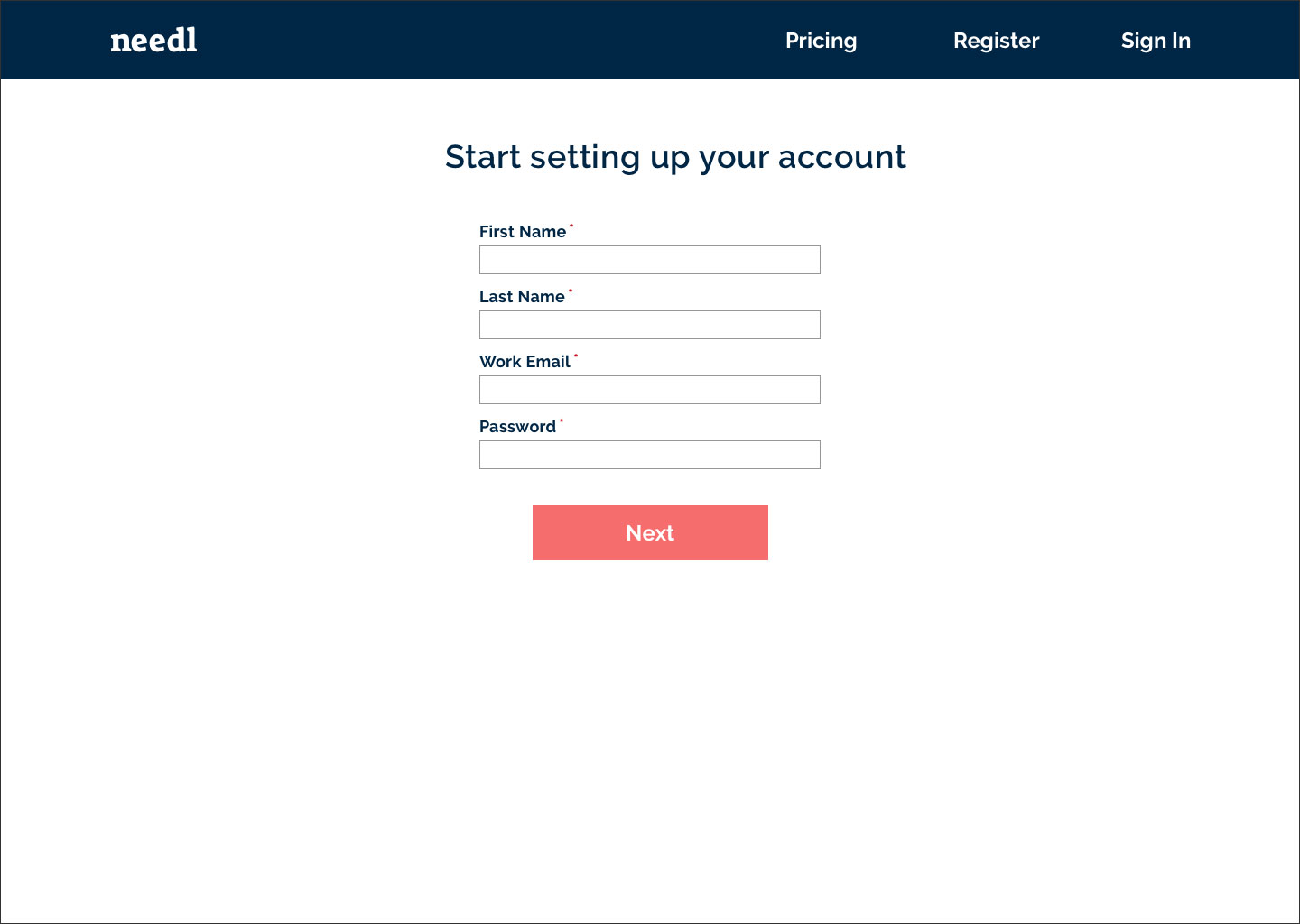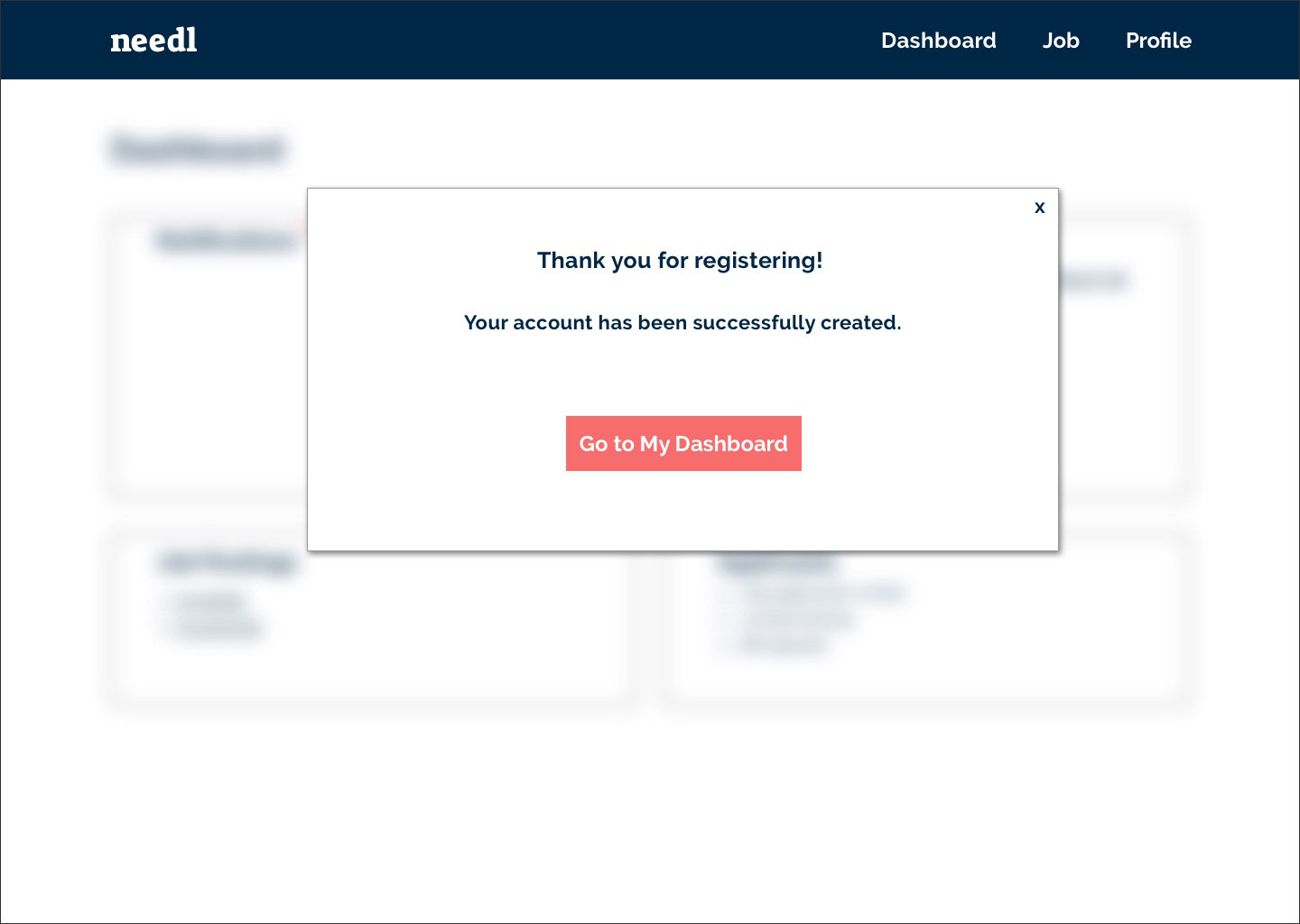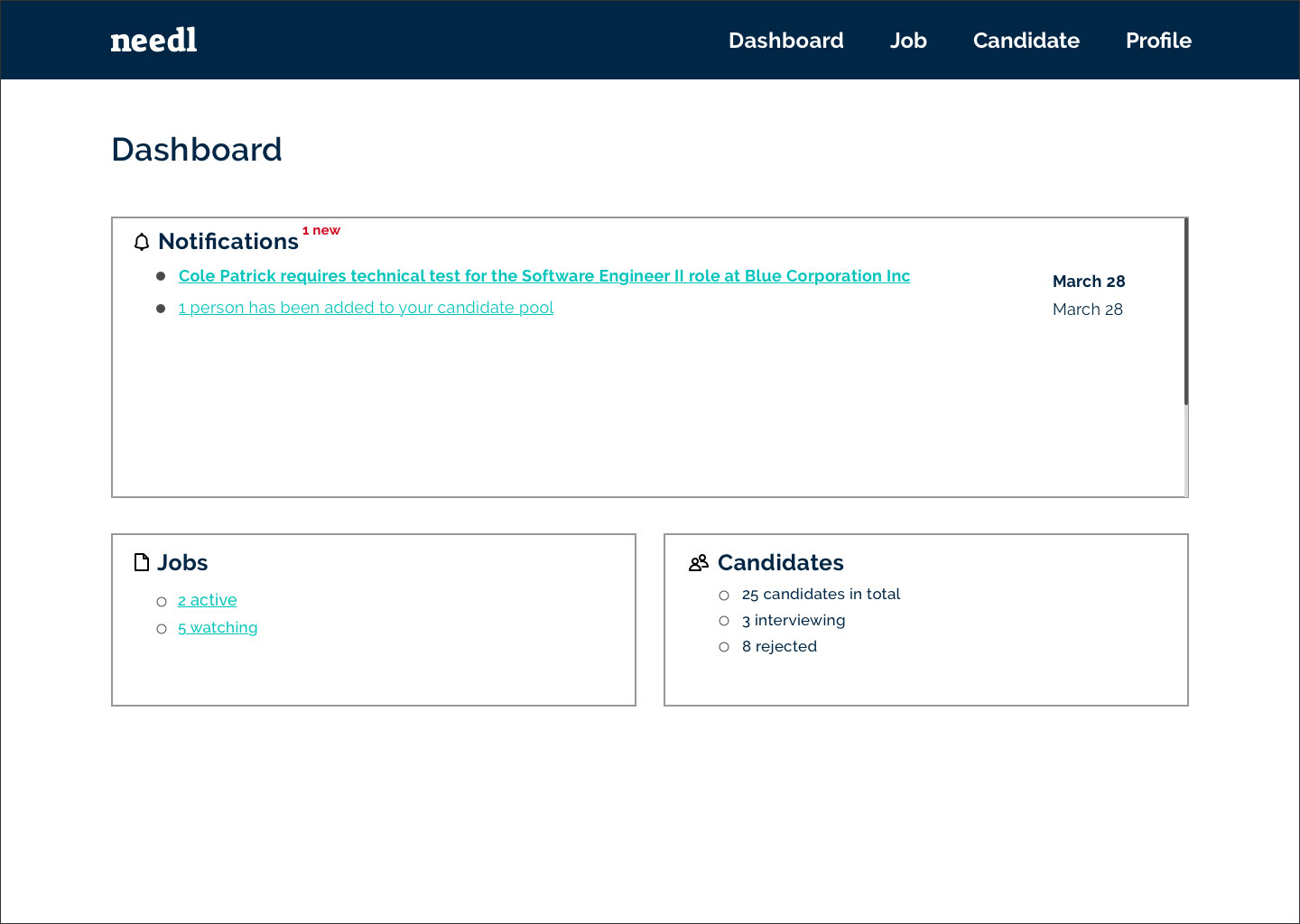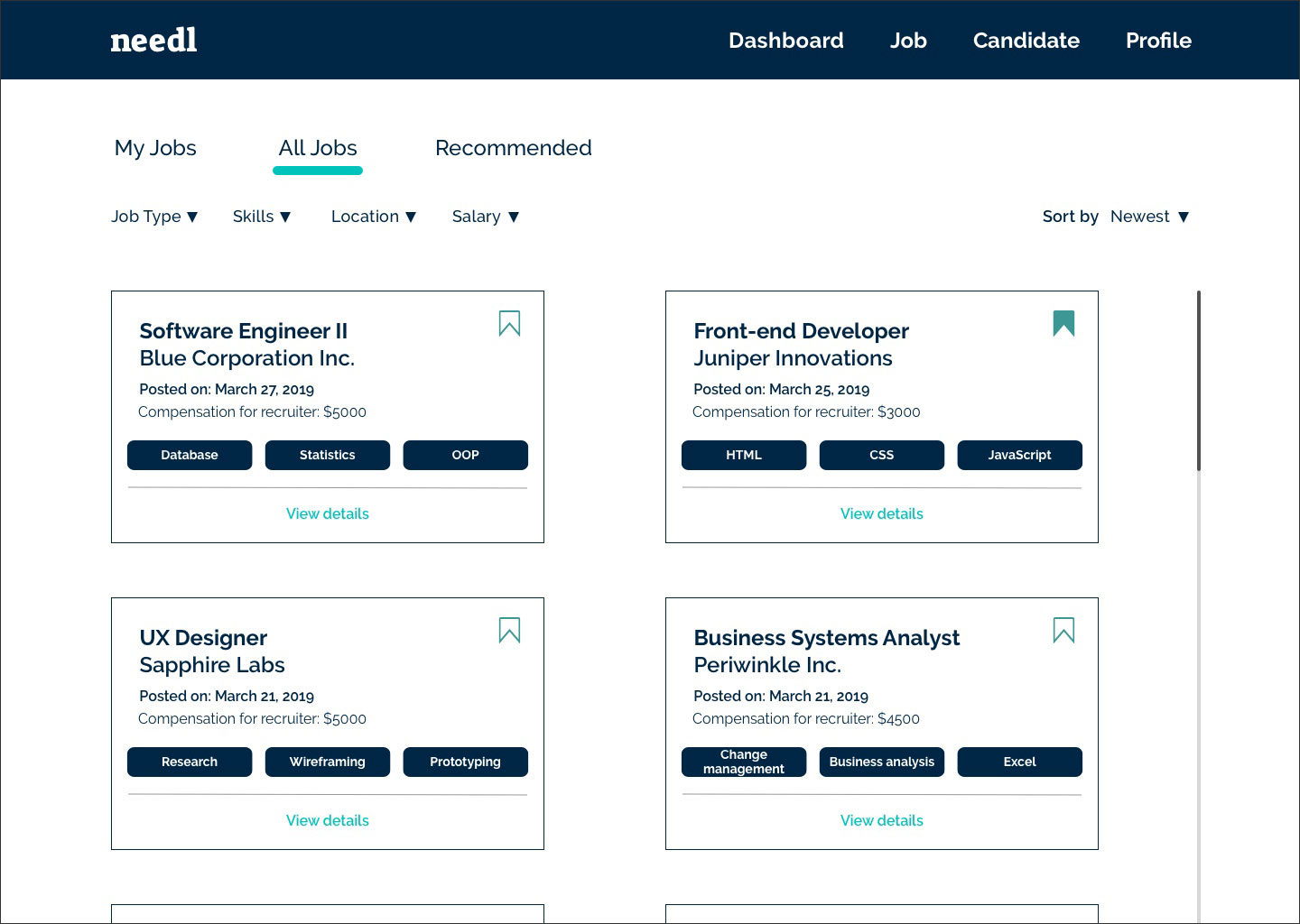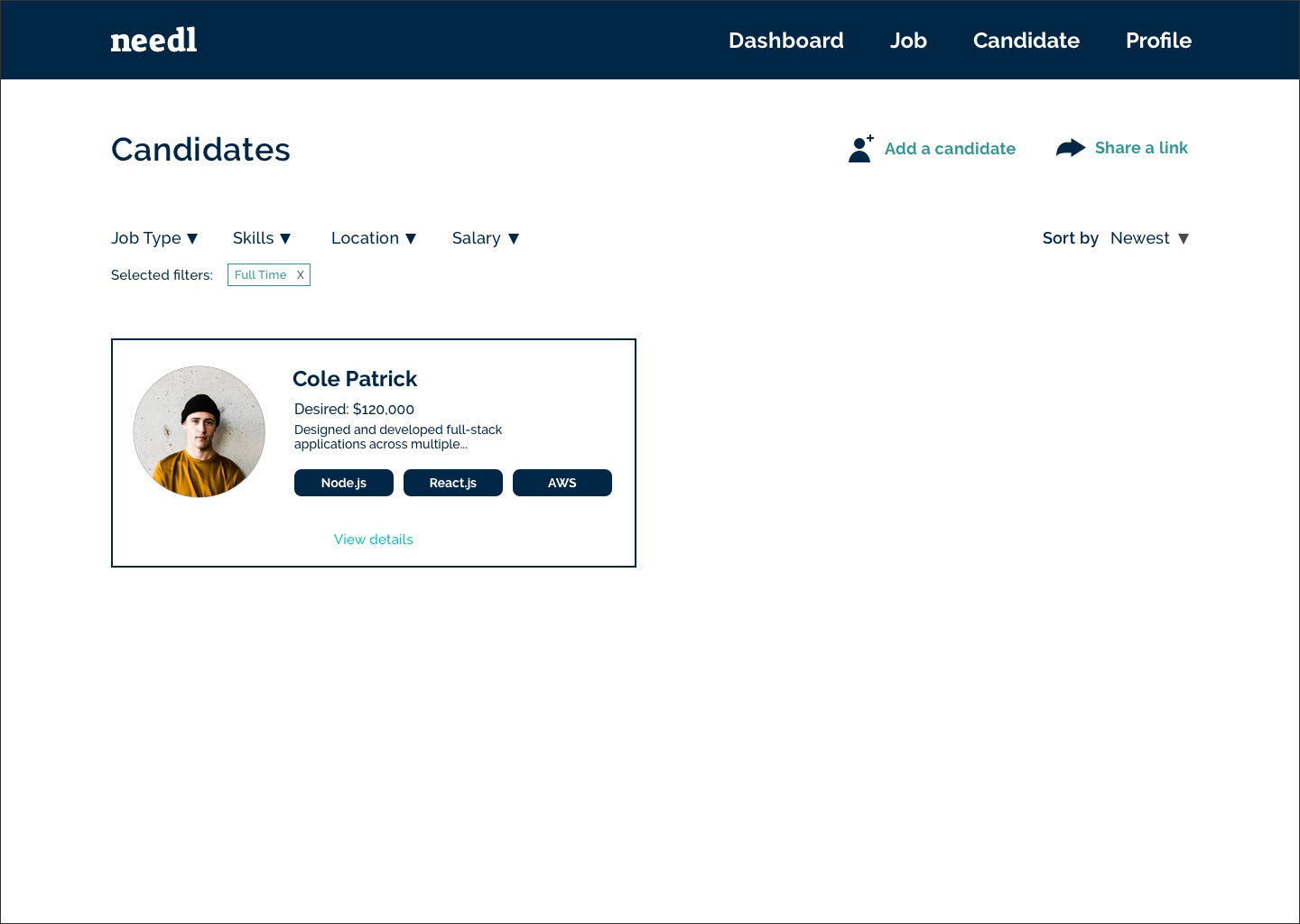
Tools: Miro, Sketch, InVision, paper, post-it notes, pens, markers
Team: three UX designers
Table of Contents
Trying to find successful business ideas is hard. But when you work in the industry long enough and know all ins and outs, the ideas you can come up with are the best. Our client has been working in recruiting industry for many years and was able to uncover an opportunity of improving an existing recruiting process and help companies hire right people, as well as help recruiters to place their candidates more efficiently.
Understanding the Problem
At a kickoff meeting, our client stated the main problem:
Finding the right talent for the job is difficult. Although recruiters help accelerate the process, the fees are expensive and companies are limited by a number of potential candidates.
The existing situation for companies is that:
- they usually have a fixed budget when deciding to work with recruiting companies;
- because of that, can only work with 1-3 agencies;
- agencies might not have the right candidate because their candidate pool is limited;
- hiring for technical positions requires screening for technical skills;
- recruiters charge 15-25% of annual salary.
At the same time recruiters and recruiting agencies:
- have qualified candidates but do not have the right positions for them;
- have a hierarchy where recruiters do not contact with clients and all communication goes through a hiring manager
The current situation is that companies have a budget to sign on with one or two recruitment agencies, but the recruiters may not be able to fill the position. Smaller recruitment agencies may have the right candidate, but would not supply it because they are too small and not well-known on the market.
Defining Possible Solution
With that being said, the solution to the problem would be to create a platform where companies can freely publish job postings with a preset budget. Any registered recruiter or a recruiting agency can supply their candidates for those positions.
Connect businesses with committed and registered recruiters faster than ever before, based on a desirable budget for service fees.
Three basic goals for the project:
Business Goals: Allowing businesses to expand their potential hiring pool in an affordable way while providing recruiters (agencies and individuals) a competitive marketplace.
User Goals: Matching ideal applicants with their dream job in an efficient and cost-effective way.
- Recruiter: Find placements for job seekers.
- Hiring manager: Find candidates with the right qualifications.
Project Goals: Creating a responsive web app and a landing page that exceeds the client's expectations.
Research
To begin our research, we started to look at platforms that help recruiters to automate some parts of their workflow, for example, keeping track of emails, phone calls, clients, potential candidates, etc. As well as software that helps to hire managers to do their job more efficiently, for instance, automating sourcing, tracking, hiring and setting up teams. We compared 5 different companies that provide software for hiring managers and recruiters and chose the top nine features that are common among that software.
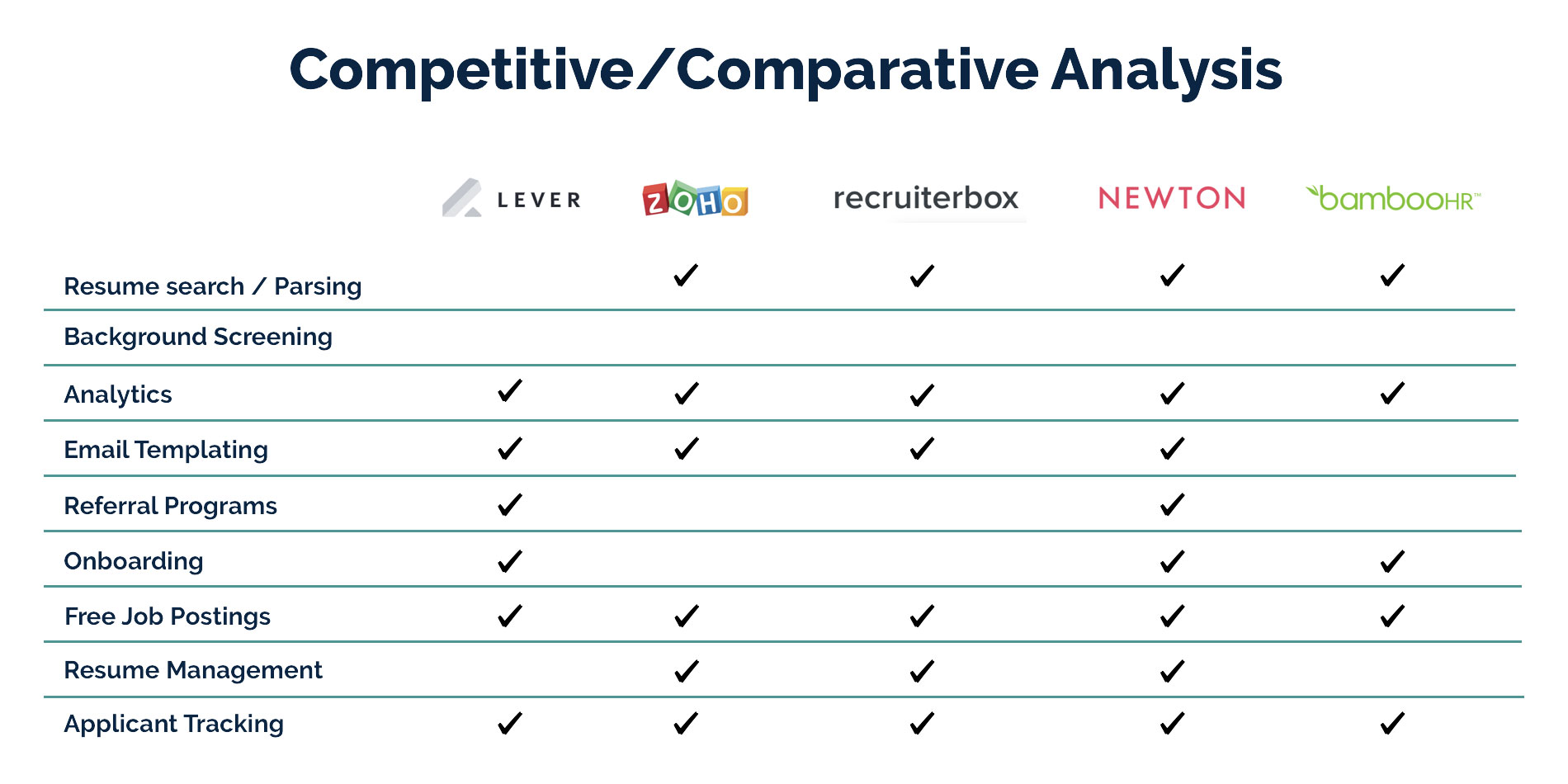
All of these products are great tools with tons of useful features. The main takeaway for us though was that in terms of communication between a recruiter and a company, they only help with creating job postings and publishing them on various (the most popular) web platforms such as LinkedIn, Indeed, AngelList, etc.
We also analyzed web platforms like Indeed, AngelList, and LinkedIn as our indirect competitors.
Interviews
Our client provided us with six contacts to interview. Those were professionals in their fields with many years of experience: HR managers, hiring managers, and recruiters. We came up with a set of questions for them but tried to keep the conversation flow natural. Here are some quotes from our interviewees:
“Can you describe what a successful hiring process would look like?”
Communication needs to be clear and efficient.
A successful hiring process is when everyone is informed of the current status.
“…vetting and pre-screening candidates”
Affinity Diagram
The next day, we reviewed all the responses from our interviewees and wrote down all the key facts and ideas on post-it notes combining them into categories and organizing into an affinity diagram.

Affinity Diagram
Creating the affinity diagram helped us to clarify the main pain points of our users. Here are our conclusions:
- Clear communication is the key to a successful hiring process.
- Recruiters' notes are important.
- Keeping all parties updated on a hiring process plays a crucial role in a successful outcome.
- The main pain points for recruiters are: back and forth emails, the absence of a place where a hiring manager can see all updates and future steps, communication through an account manager.
- Pain points for hiring managers are: quality of candidates - not all of them have necessary technical skills for the position; quality of recruiters - not all of them take the time to understand company's values and needs and find the right fit.
- Employers want recruiters to assist in vetting for candidates' technical skills.
User Personas
When it was time to create our personas, we already had enough data and a clear understanding of who they should be. On the recruiter side, we had Joseph.
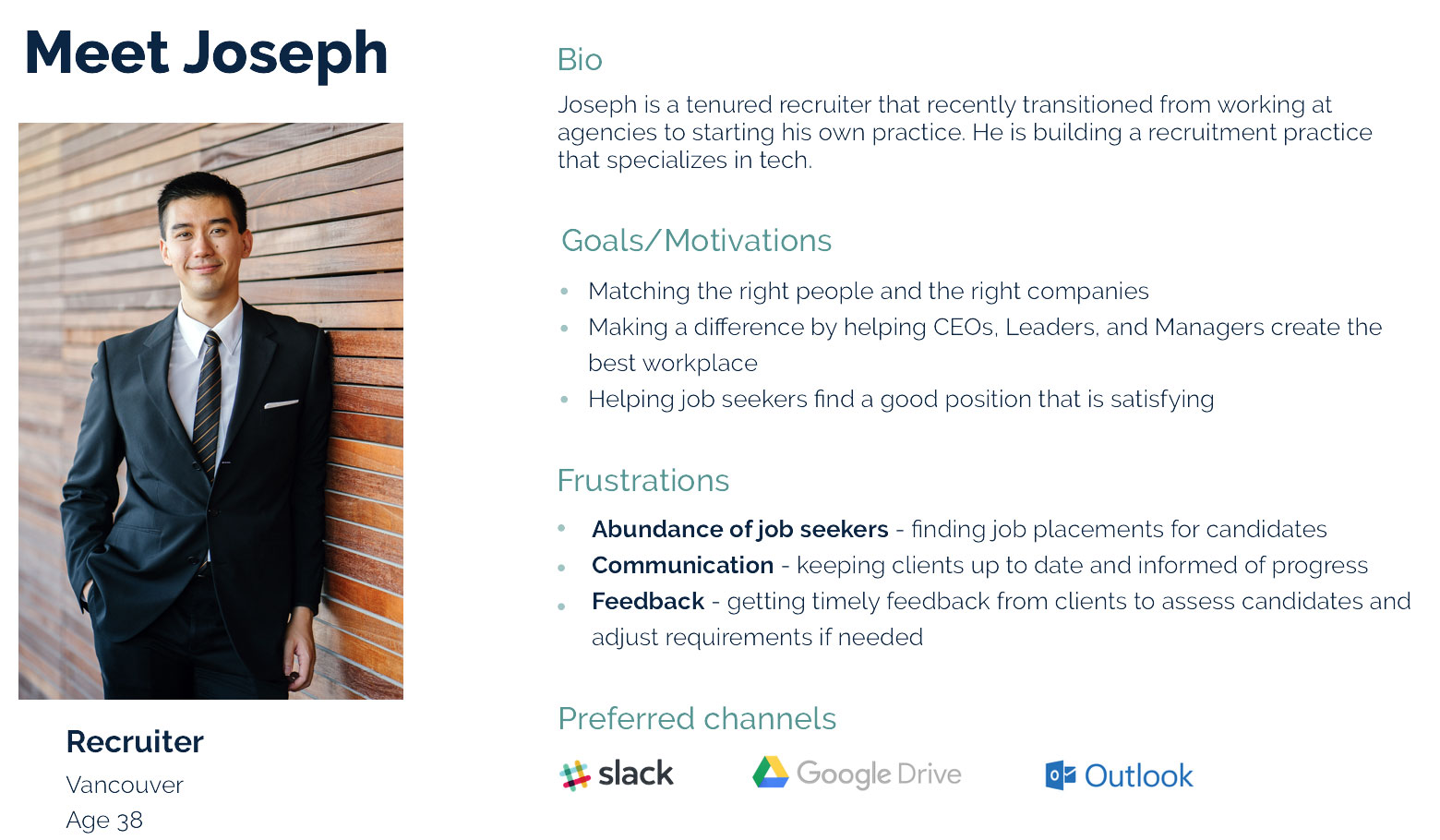
Recruiter User Persona
On the employer side, we had Lindsey.
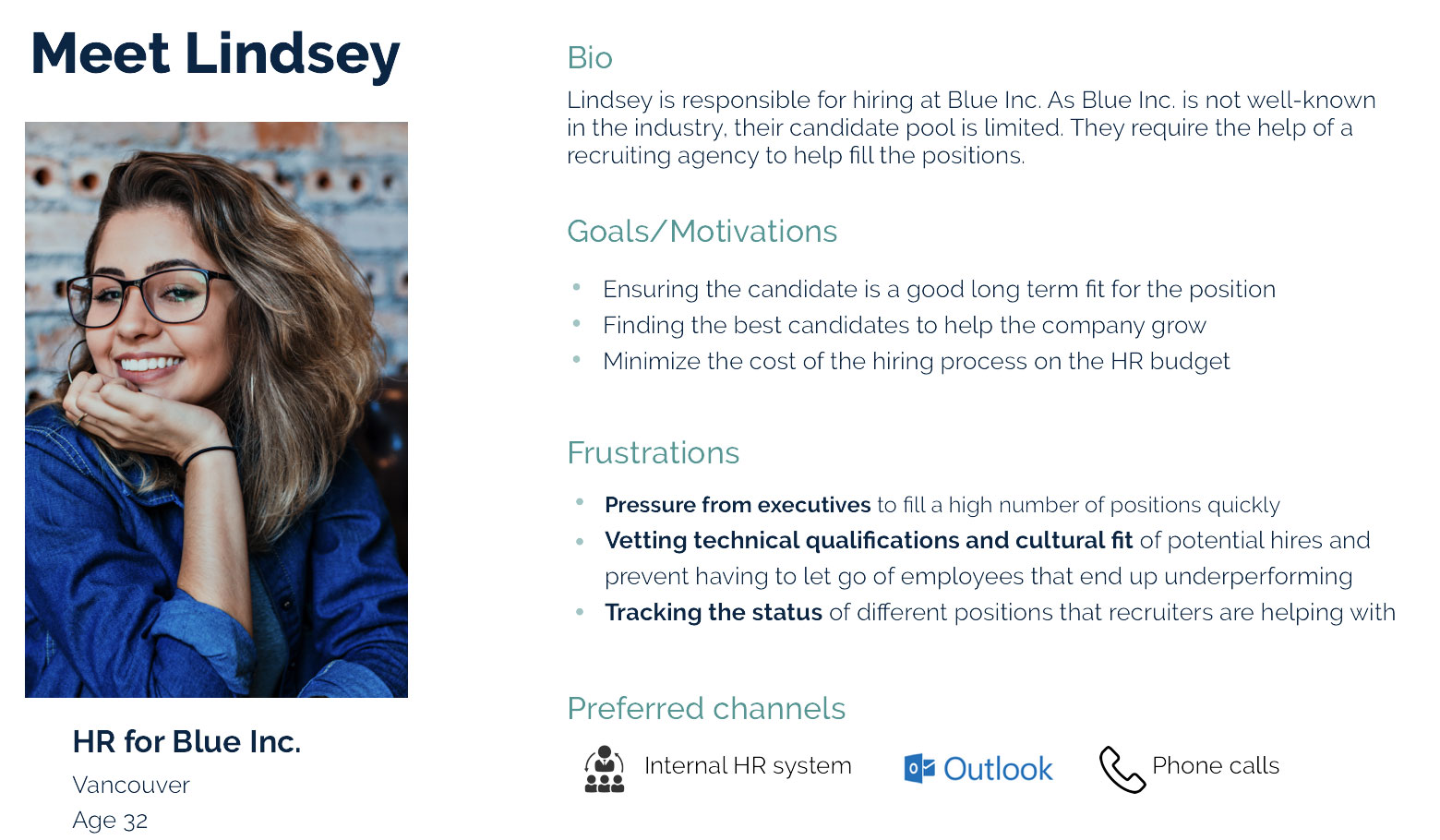
Employer User Persona
Problems and Solutions
We defined the main pain points:
- manual data entry;
- candidate pool generation;
- documents sharing;
- progress updates;
- current status;
- having the right match.
For all these problems we came up with the possible solutions. We had a brainstorm session and wrote down all ideas that came to mind, even the craziest ones.
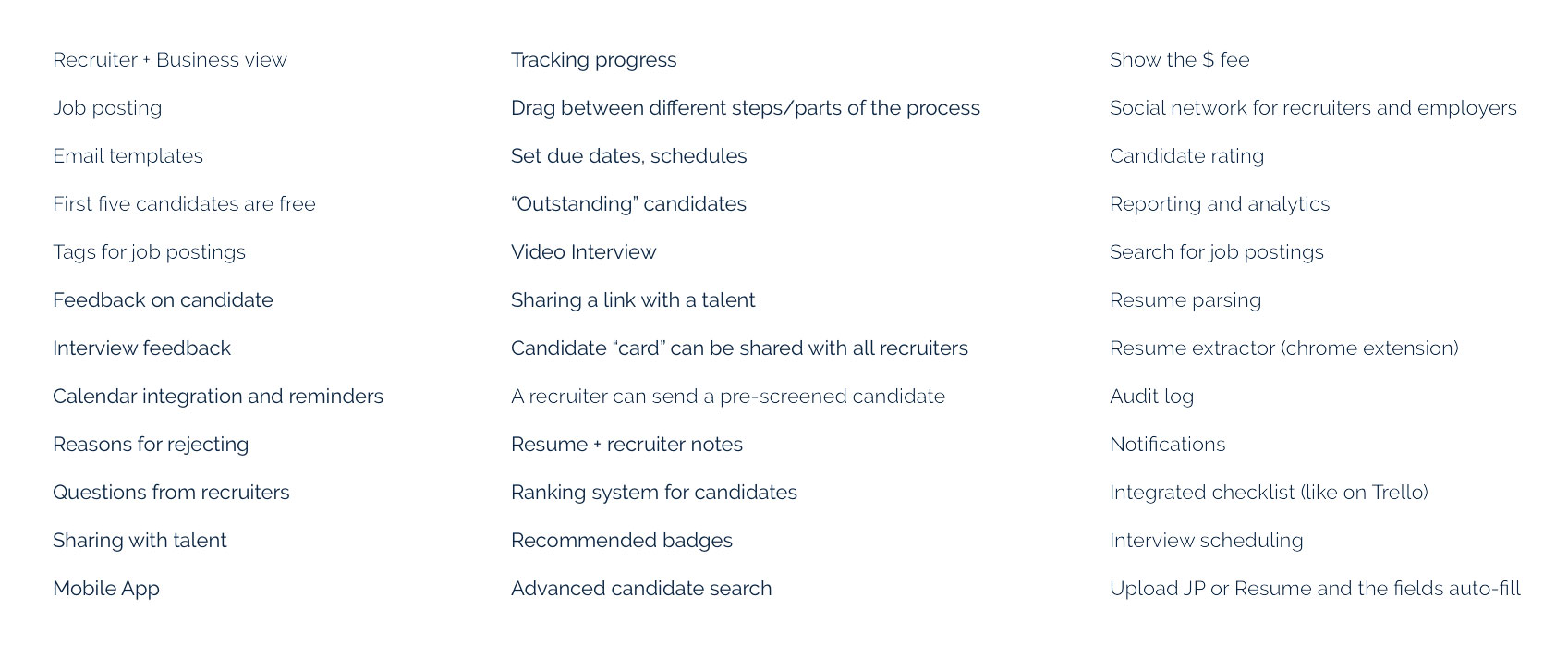
Features
After analyzing and weighing all the ideas, we decided which ones would bring the most value and were possible to implement during the project time.
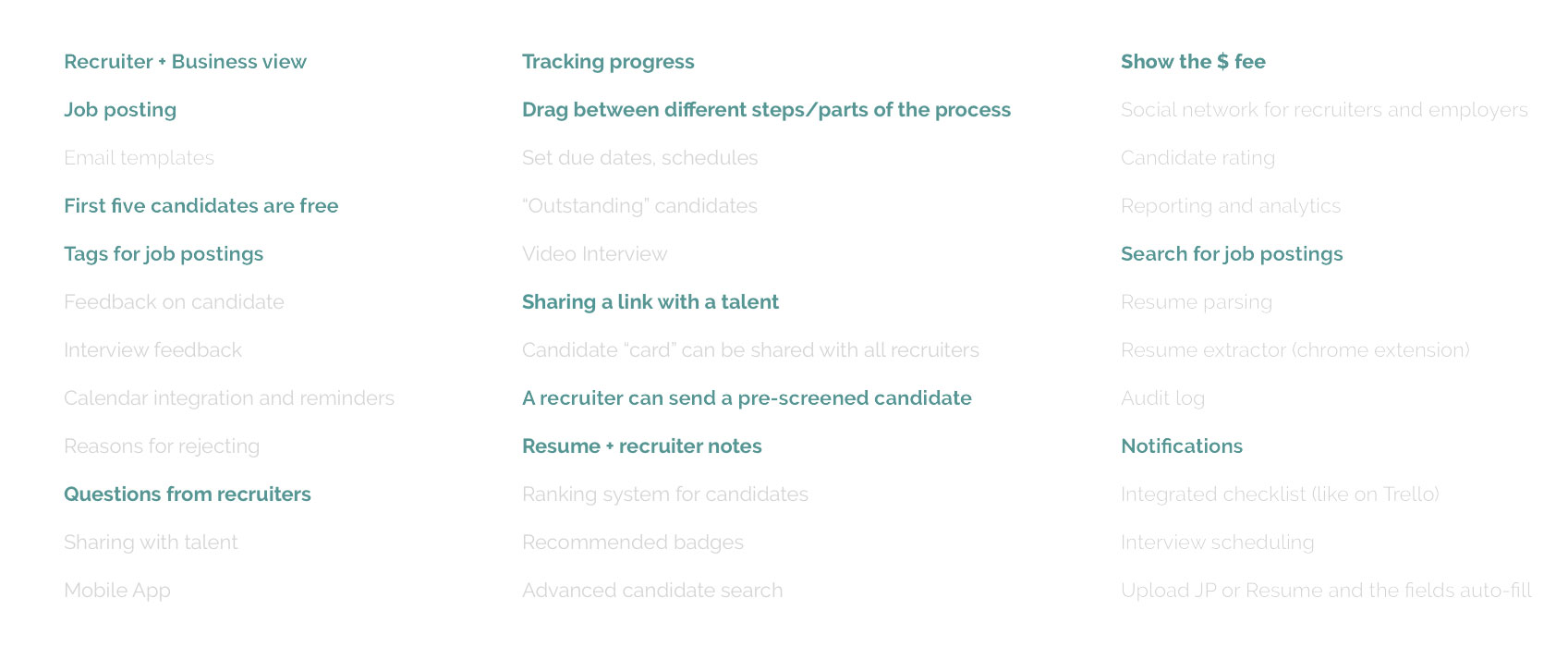
Selected Features
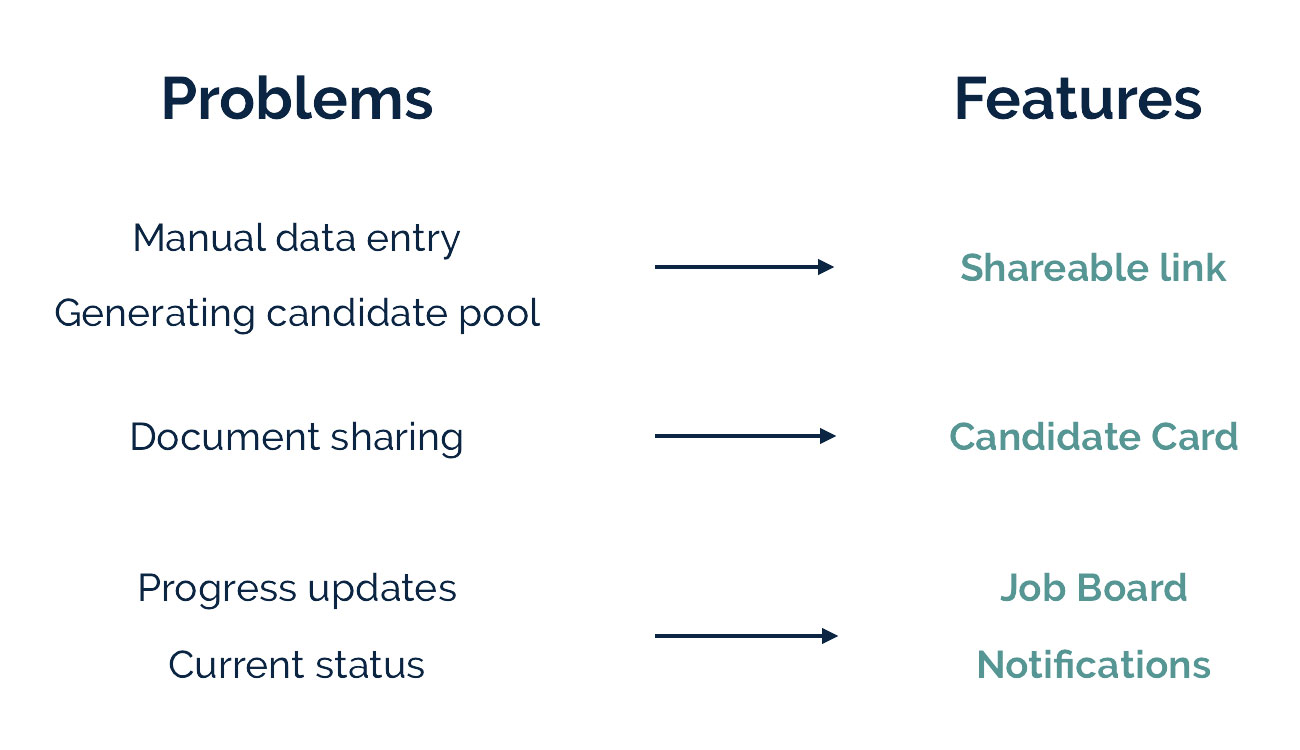
Let's talk about these features in details.
- Shareable link. We wanted to let candidates do the work for recruiters. Every recruiter would be able to send a link to a form to a candidate. A candidate can fill the form in, providing all the information they want a recruiter to know. After submitting a form, this person will be automatically added to a recruiter's candidate pool.
- Candidate Card. Right now recruiters have to create multiple folders in Dropbox or Google Drive and upload all the files they want to share with clients. Instead, we offer an opportunity for a recruiter to send a candidate's card that includes all the information about this candidate as well as attached documents and personal notes to an employer.
- Job board. A process of going through the different stages of a hiring process reminded us of an idea of moving tasks across the list of steps in a workflow that can be found in platforms like Jira, Pivotal Tracker, Asana. The workflow would be a hiring process for a particular job posting and the tasks would be candidates that are interviewing for that job position. Candidates can be easily moved from one stage of an interview to the next and recruiters will be able to see the progress and know exactly what's going on with this particular candidate.
- Notifications. Every change that happens on a job board will reflect on recruiter's dashboard as an inner notification and an email.
Once we defined our minimum viable product, we created user flows for a recruiter and an employer.
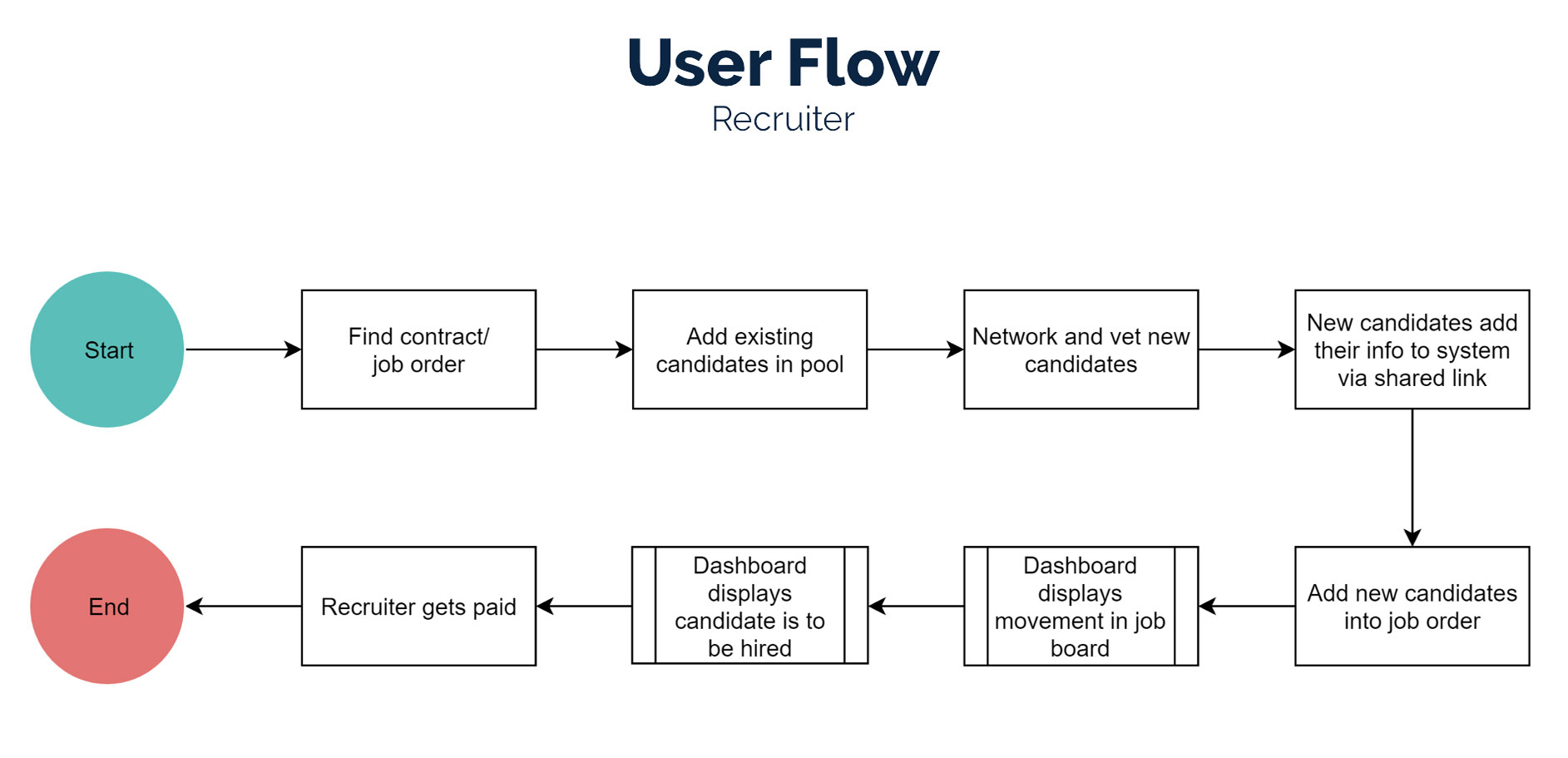
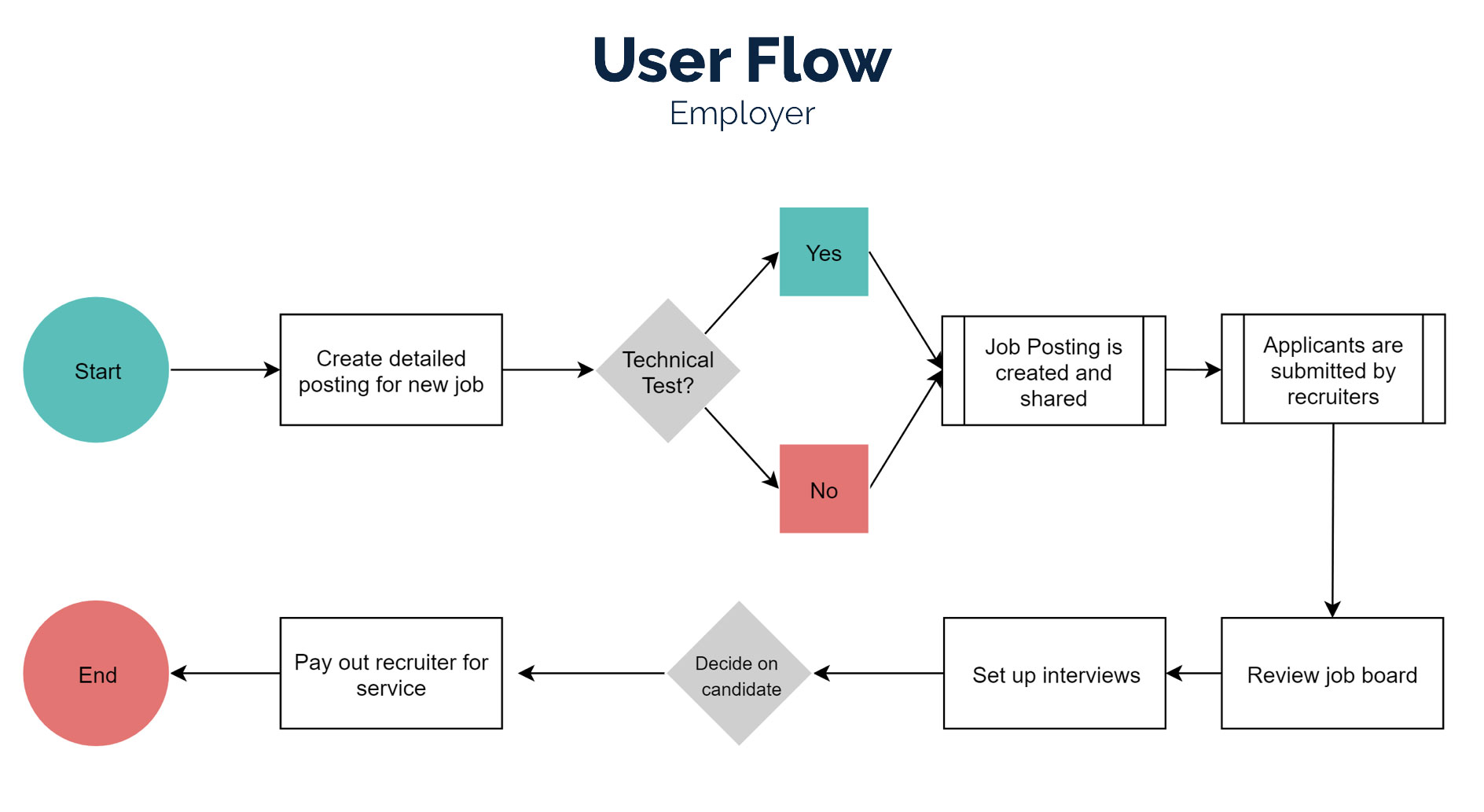
Design
Up until now, we had quite a vague idea of what our application would look like. That is why we started designing by holding a design studio. All three of us came up with our own vision of some main pages, discussed them, selected the most workable solutions, made paper prototypes, and iterated through the user flows over and over again tweaking some parts of the pages.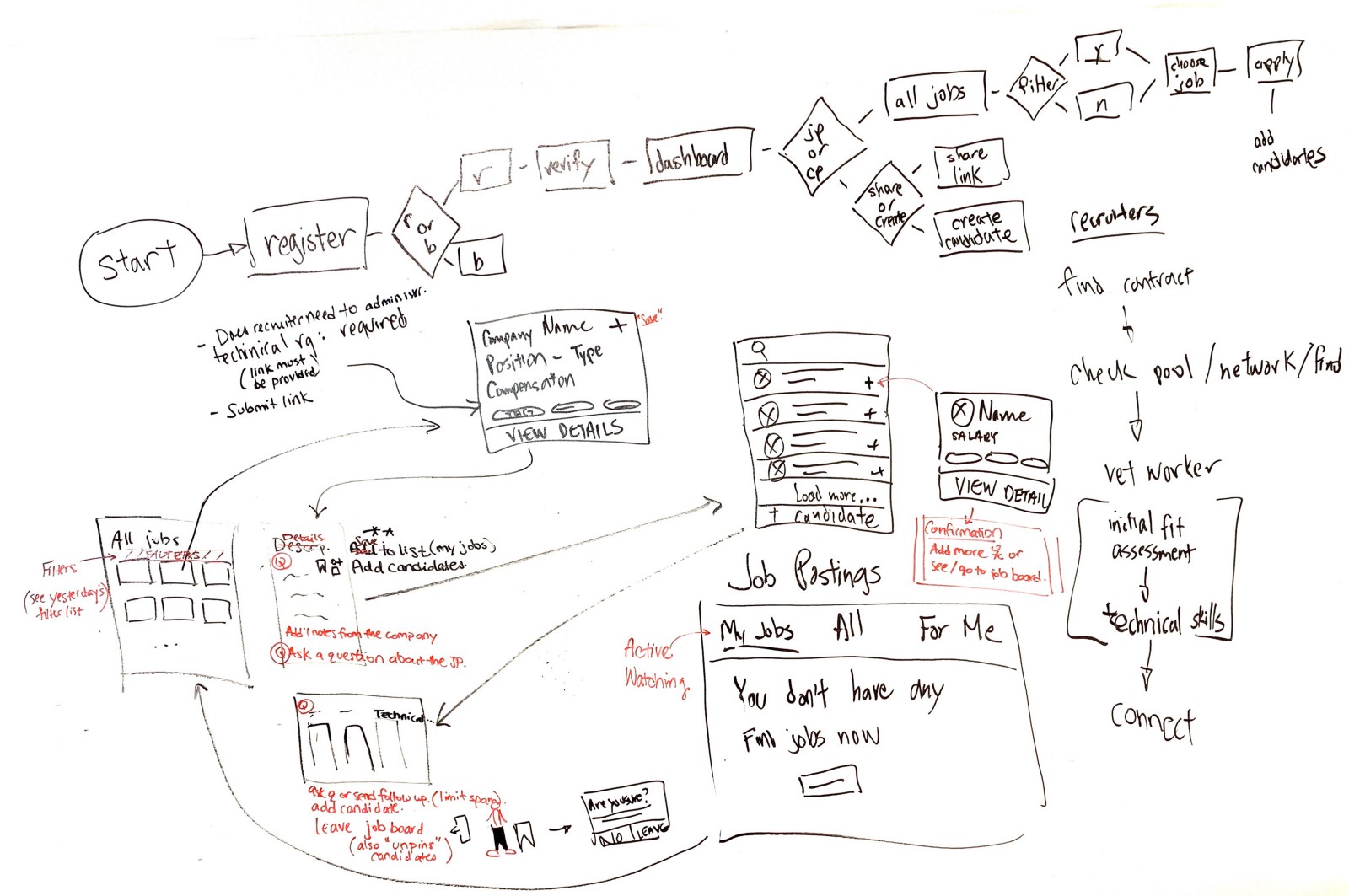
Design Studio

Prototypes
Testing
We asked our testers to perform the following tasks:
As an Employer:- Create an account as an employer.
- Under jobs, create a job posting.
- Create an account as a recruiter.
- Add a candidate by sending a shareable link to them.
- View and save the job posting: Blue Corporation Inc., Software Engineer II.
- View and add the candidate, Cole Patrick, to the job posting.
Here are some changes that we made based on responses from our testers:
Filter and Sorting Menu
Our users tested two versions of the filter menu: on the top (as a drop-down menu) and on the left side of the screen. Even though opinions were divided equally, we kept in mind that some categories like 'Location' might get really long in the future and chose the second option. Left-sided filter menu also worked better for the mobile version of the app.
Job Posting Preview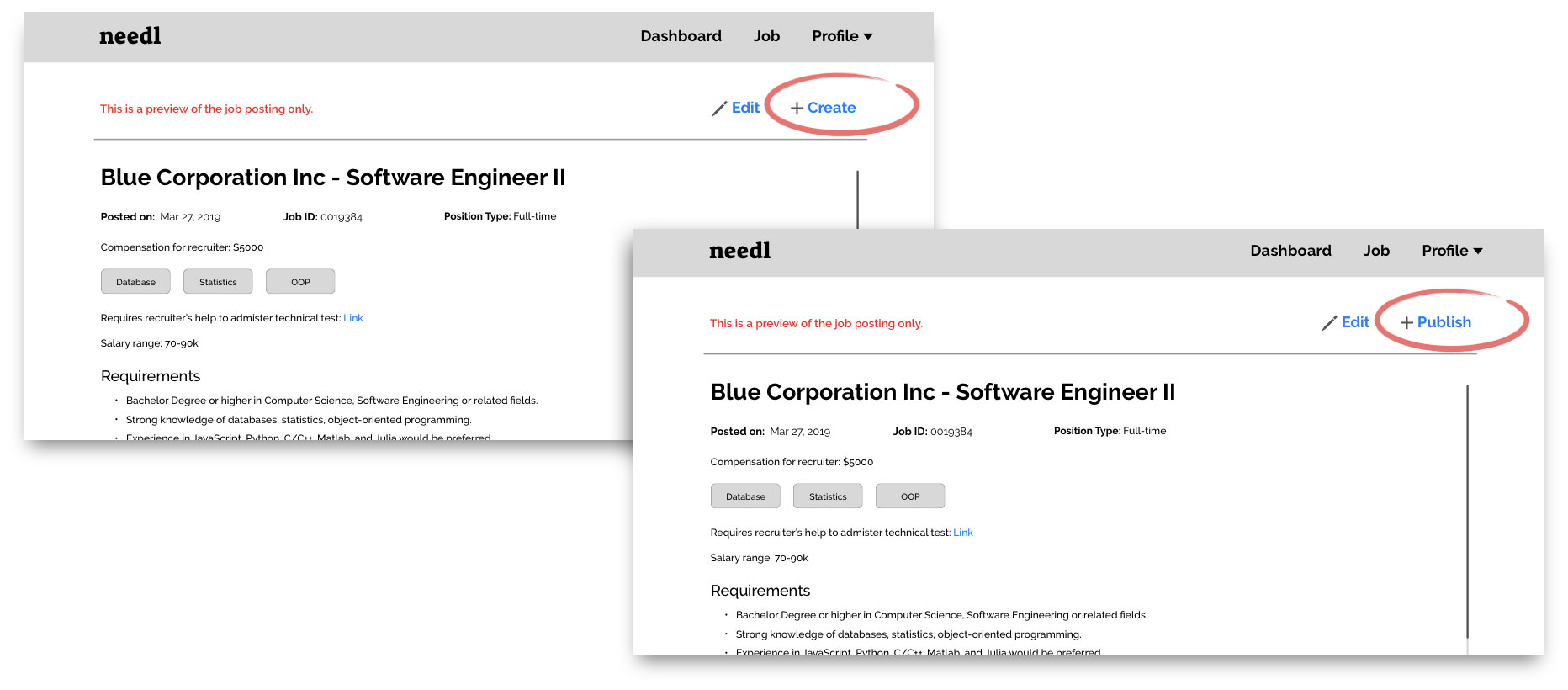
An employer can preview a job posting before making it public. (advertise, post) Some of our users were confused when they saw a 'Create' button at the very last step of creating a job posting. They felt under impression that they would create a new job posting instead of publishing the existing one, so we changed the button name to 'Publish'..
Recruiter Notes and Candidate List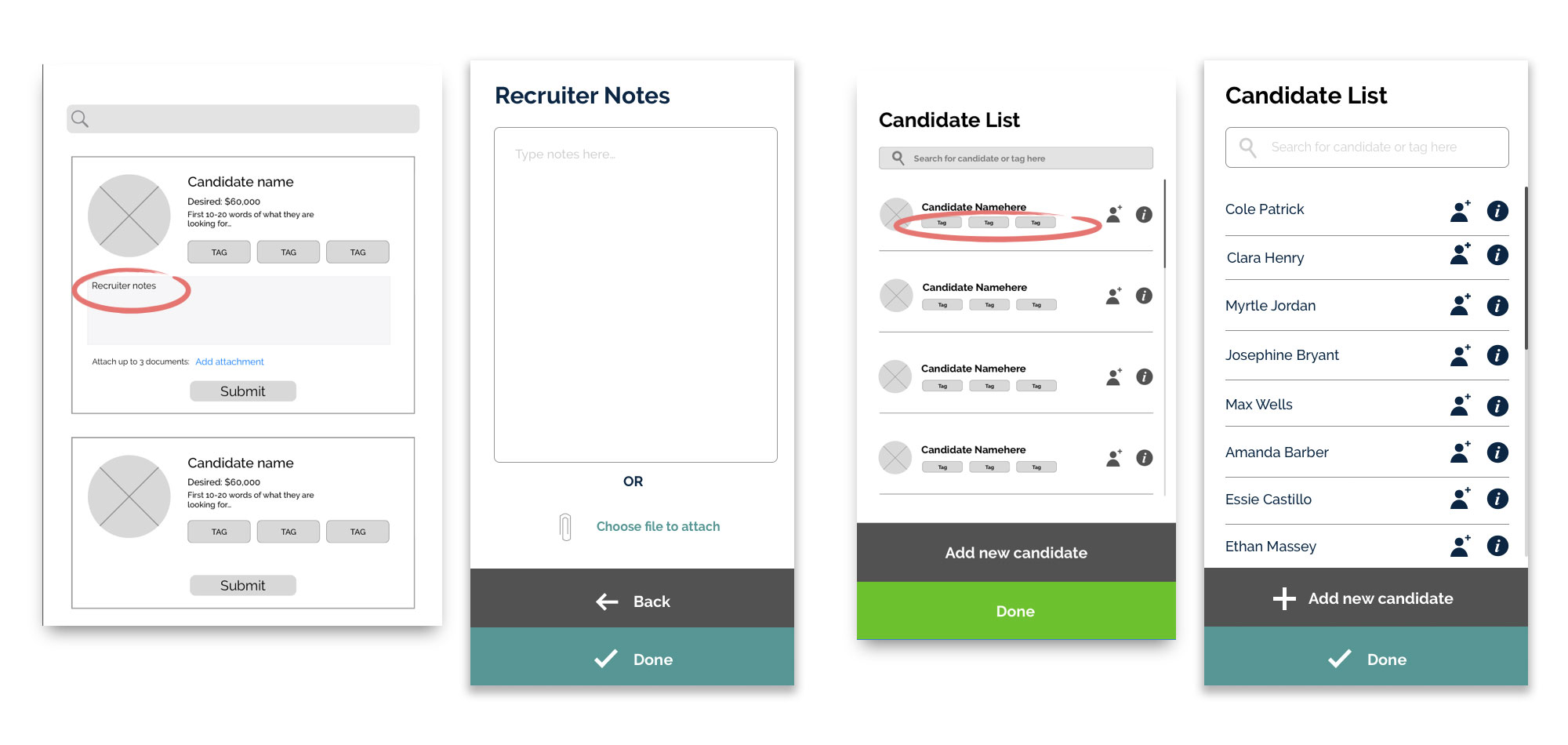
We also changed how a recruiter can add notes to a candidate's card when submitting it to a job posting. We made a separate popup for that. As for the candidate list, we removed all tags to make the list more compact.
Branding
Initially, our client had just a working title of his project, Recruitment on Demand, so we offered three versions of the new name:
- Talpid (.io or .ca) - rapid Talent
- Needl (.io) - Finding a needle in a haystack
- Waldo / Wally - Reference to the game book Where's Waldo/Where's Wally
Our client chose Needl.
In this project, we were offered an opportunity to design a UI part of the app as well.
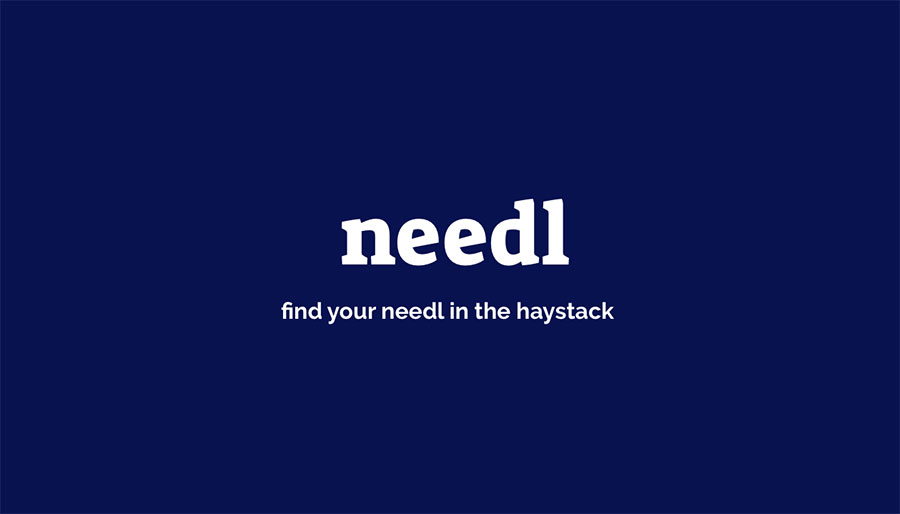
Why the rebrand?
- Easy-to-remember, relevant and impactful
- SEO Improvements
- Available domains - needl.io ; needl.it
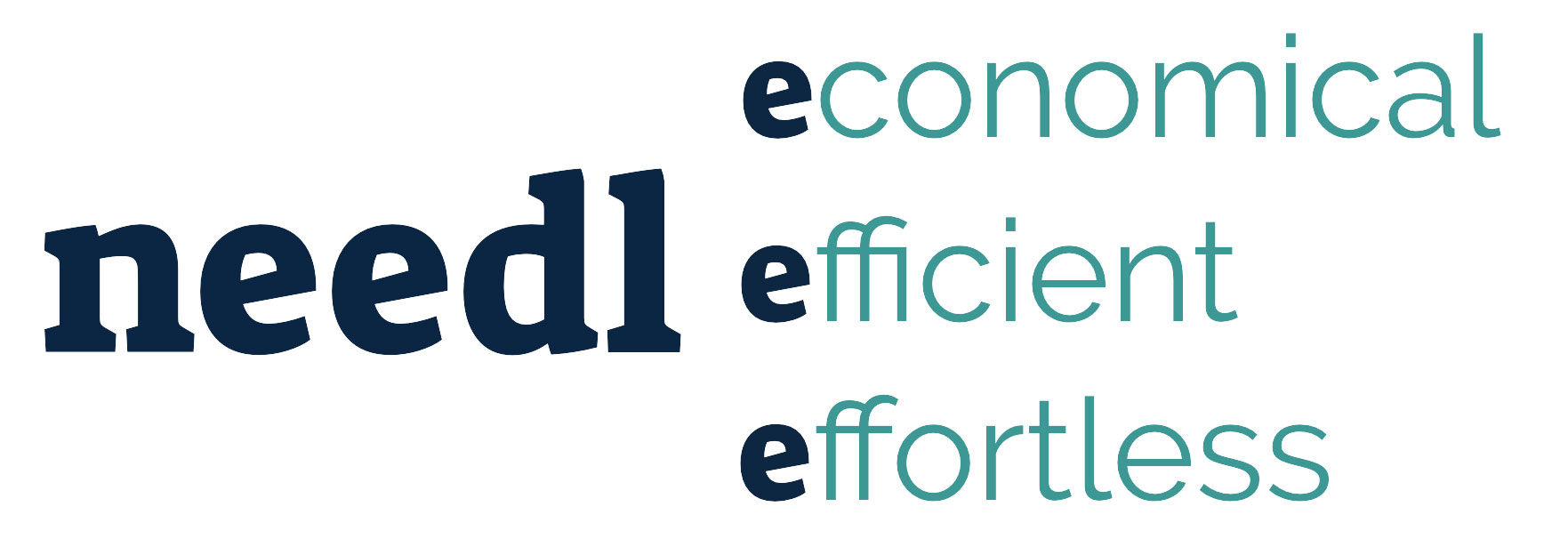
Colors and Fonts:

- navy to represent confidence and professionalism;
- teal to reflect calm, clarity, and openness to communication;
- light pink to add emphasis.
Final Prototypes
Here is the link to the final prototypes.
And here is a reveal of some screens:
Conclusion
Working with the knowledgeable, responsive and creative client was a truly terrific experience. In three weeks I enhanced myself in interviewing, prototyping, empathizing users and became fully engaged in our client's idea. This project gave me an understanding that building a comprehensive application requires a lot of research, user testing, analyzing and creative thinking.

